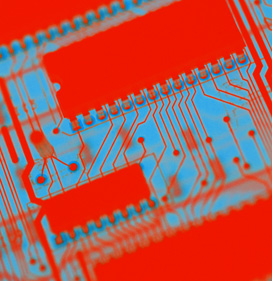The Internet of Things will have an unprecedented view into people’s lives, but will be difficult to secure after the fact. And cybercriminals continue to develop new ways to take money from victims. So warns an American report, Georgia Tech Emerging Cyber Threats for 2014
The bring-your-own-device (BYOD) trend introduces two threats to companies: relatively insecure devices are entering the network and data is stored on personal devices. But BYOD is not going away, the report says. Companies will have to find ways to lock down (or out) devices, whether compartmentalising trusted apps and sensitive data using secure containers to using network access controls to bar untrusted devices from accessing parts of the network.
Malware and technical hacks represent a significant threat to the users of mobile devices, but a far more pervasive threat is the legal use of data collected from smart phones and tablets. When former National Security Agency contractor Edward Snowden revealed in June 2013 details of the data collection practices of the intelligence agency, the extent of the NSA’s PRISM program for gathering data on persons of interest surprised most watchers. However, the program only scraped the surface of the data available.
A plethora of devices now connect to the Internet. From embedded automotive systems to home automation to industrial control systems to consumer devices, the Internet of Things will only expand A significant problem for devices connected to the internet will be in handling security updates without putting the devices at risk of compromise.
As for the CLoud, criminals can use reputable services to bypass many of the digital defenses erected by companies. Technically sophisticated cyber-criminals have created their own cloud services.
The report points out that companies are increasingly focusing on reputation as a way to keep out many security threats. Firms use blacklists generated from the monitoring of a variety of malicious activities to block potentially hostile websites. More fine- grained reputation systems are also being developed, from rating the trustworthiness of an application or service to grading the security of a partner.
With reputation increasingly being used to make se- curity decisions, attackers will continue attempts to poison or whitewash reputation
• Using cross-site request forgery, unscrupulous website owners can inject higher-value content to poison the profile of visitors and profit by fooling advertisers.
Finding information on attackers is not difficult: blacklists, open-source intelligence, logs from a variety of network devices, malware analysis, social networks and other sources can all give defenders some insight into attackers’ techniques, identities and motivations.
What to do?
Chasing technology and creating multiple layers of static defenses has driven up security costs. Reducing cost while protecting the business will require a more data-driven approach to security. Researchers and businesses that focus on gathering more information on their security state and their current threats can better protect their networks and data while holding down costs. In addition, moving the focus of security from the device to a business’s data can simplify defenses. Finally, cyber insurance can act as a safety net
For the 13-page report visit – http://www.gtsecuritysummit.com/2014Report.pdf
Comment
Jes Breslaw Director of Cloud Solutions, EMEA, Accellion has scommented: “Shadow IT often occurs because employees are seeking ways of being more productive, through cloud based solutions such as Dropbox or Evernote. It doesn’t mean that your teams are trying to be sneaky, but in order to prevent these types of gaps in IT oversight, companies need to provide a viable solution that their employees can use without losing efficiency gains. Simply blocking the services means you’re decreasing the productivity of your teams.
“These gaps mean that IT doesn’t have oversight into where business data is being shared, stored and edited. This is especially crucial in regulated industries where IT/security teams need to produce audit trails and logging to be compliant with industry regulations. Furthermore, the BYOD trend has changed the way that companies need to invest in security. Managing a device that is not owned by the corporation is a waste of money,organisations need to focus on confidential content, and ensuring that its secure no matter what device is accessing it. They need to ensure that the correct encryption and access protocols are in place, and that apps that are acceptable to use are whitelisted, while insecure apps are blacklisted.
“Because employees often now have multiple devices, security measures need to be flexible enough to cover any device that is chosen, and be a seamless experience, or shadow IT will rear its ugly head again.”









